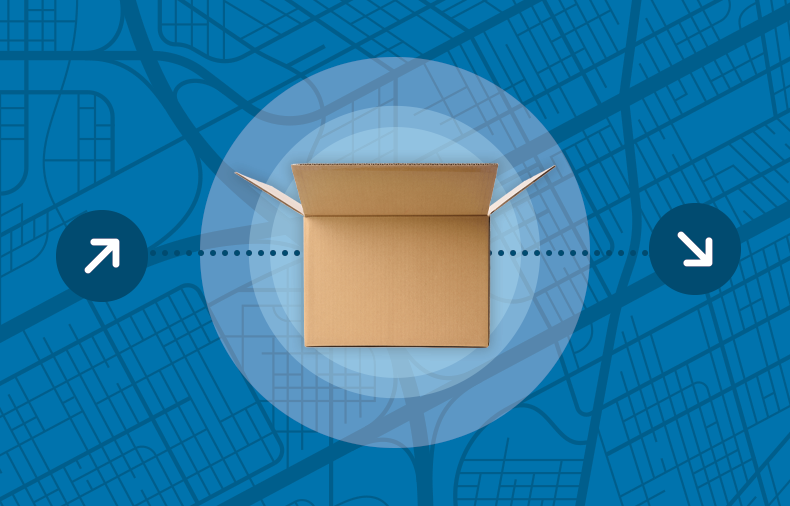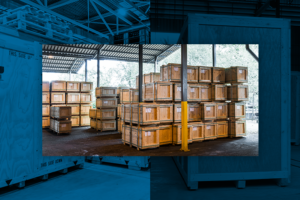Parcel delivery services help businesses and individuals move smaller packages quickly and reliably. Whether you’re fulfilling e-commerce orders or mailing gifts, choosing the right provider means weighing speed, cost, tracking, and service coverage.
And the stakes are high—especially for businesses. A 2022 Pitney Bowes survey found that over 50% of online shoppers abandon brands after a single late delivery. For a company shipping 500 orders a month, even a 10% late rate could mean lost revenue and churned customers.
While traditional parcel services handle one-off and lightweight deliveries well, if you’re shipping goods in bulk—especially on pallets—or managing high volumes before they’re split up for individual delivery, freight shipping might be the smarter, more scalable solution. Platforms like uShip help simplify that process.
Types of Parcel Delivery Services
Here are some of the most common parcel delivery methods, each with different strengths depending on your needs.
Standard vs. Expedited Delivery
Standard delivery (3–5 days) works well for non-urgent shipments. A retailer shipping a $50 jacket via USPS Ground might save $8–$10 over express services. Expedited options, like FedEx 2Day, cut delivery to 1–2 days—ideal for sensitive items like medical devices.
Businesses sending high volumes or recurring shipments might consider freight for faster pallet-level movement before last-mile delivery.
International vs. Domestic Shipping
Domestic deliveries are generally faster and cheaper. For instance, shipping a 2-pound package from New York to Los Angeles might cost $15 with UPS Ground. International shipments, like to London, often take 5–7 days and cost $40–$60.
Cross-border sellers benefit from carriers with strong customs handling. Bulk exports may qualify for freight rates, particularly when moving multiple units at once.
Same-Day and Next-Day Options
Same-day delivery serves immediate, local needs. A florist might use a local courier to fulfill a $75 bouquet order within hours. Next-day delivery is common in retail—Amazon Prime delivers $100 electronics overnight. According to ShipMatrix, average parcel speeds have improved by over 40 percent since early 2020.
Factors to Consider When Choosing a Parcel Delivery Service

Delivery Speed and Reliability
Fast, reliable shipping earns customer trust. A wedding planner awaiting 20 centerpieces or a student expecting textbooks before class can’t afford delays. Check reviews and performance during peak seasons to evaluate service consistency.
Cost and Budget
Shipping costs scale with weight, speed, and distance. A small boutique might opt for slower delivery to save money, while a startup sending $500 prototypes may justify the expense of overnight shipping.
If you ship in volume, freight quotes from platforms like uShip can uncover savings that parcel services may not offer.
Tracking and Customer Support
Tracking builds confidence. A retailer shipping a $300 espresso machine wants proof of delivery, not just an ETA. Support matters, too. If a $100 gift basket gets stuck at customs, responsive assistance helps resolve the issue quickly.
Coverage Area
Your delivery footprint matters. A local bakery needs same-day service for cupcakes. A furniture maker selling nationwide needs a carrier with domestic reach. International sellers need customs expertise. Freight providers help bridge long distances, especially for inbound or outbound bulk goods.
Top Parcel Delivery Services
Major carriers like FedEx, UPS, DHL, and USPS dominate the parcel delivery space. Each has strengths. uShip, while not a parcel service, is a freight marketplace that helps businesses move large or bulk shipments through trusted independent carriers.
- FedEx: Ideal for urgent deliveries
- UPS: Reliable scheduling and nationwide reach
- DHL: Best for international exports
- USPS: Cost-effective for lightweight domestic packages
- uShip: Great for freight, bulk shipping, and larger-than-parcel items
Comparing Services and Features
- FedEx: Fast delivery—great for time-sensitive art prints
- UPS: Scheduled drop-offs—perfect for event caterers
- USPS: Affordable ground service—ideal for mailing books
- DHL: Trusted customs navigation—useful for international sellers
- uShip: Freight quotes from independent drivers—efficient for shipping a $500 pallet or bulky item
Pros and Cons of Major Carriers
| Carrier | Pros | Cons |
|---|---|---|
| uShip | Custom freight quotes for bulk or oversized goods | Not suited for small parcels |
| FedEx | Fast delivery and tracking | More expensive for small businesses |
| UPS | Strong network and flexible pickup | Slightly slower than FedEx for express |
| USPS | Budget rates for small items | Limited speed and international tracking |
| DHL | Great global reach | Higher international costs |
How to Pack Parcels for Safe Delivery
Importance of Proper Packaging
Fragile items need protection. A $150 crystal vase or $80 lamp requires more than just a box. Without padding, breakage is likely.
Tips for Safe Packaging
Use sturdy materials. A $90 wall clock should ship in a thick cardboard box with bubble wrap. Fill gaps with foam or peanuts, and seal all edges with reinforced tape. For breakables like a $200 mirror, double boxing adds security. Shake your box—no movement means it’s good to go.
Labeling Tips
Clearly printed labels reduce risk. Add a return address and an extra copy inside. That $65 guitar pedal still gets there, even if the exterior label is damaged.
Shipping Costs and How to Save
What Affects Shipping Costs
Factors include weight, speed, dimensions, and destination. A 10-pound item traveling cross-country via overnight service will cost more than the same item going ground. Fuel surcharges may also apply.
Cost-Saving Tips
- Consolidate shipments
- Use flat-rate boxes
- Choose ground for non-urgent items
- Reuse packing materials
- Get multiple quotes—freight platforms like uShip can help cut costs on bulk shipments
Promotions and Discounts
Frequent shippers often receive discounts. UPS and FedEx offer loyalty programs. uShip’s bidding system can drive down freight costs—shipping a $400 pallet might come in 25% under standard rates.
Tracking and Managing Your Shipment
How Tracking Works
Tracking systems update at key checkpoints. You’ll see status changes like “in transit” or “out for delivery” in real-time, based on scans and GPS.
Handling Delays or Lost Packages
Delays happen. Check tracking first. If a package stalls, contact the carrier with details. Many will investigate and offer a replacement or refund if needed.
Customer Support Tips
Be prepared—have your tracking number, shipment details, and dates ready. Clear communication makes for quicker resolutions.
Eco-Friendly Parcel Delivery Options
Carrier Sustainability Efforts
FedEx is investing in electric vehicles and aims for carbon neutrality by 2040. UPS plans to use 40% renewable energy by 2025. Both are reducing urban congestion with route optimization.
Greener Shipping Practices
- Choose recycled or compostable packaging
- Ship fewer, larger orders instead of many small ones
- Select ground shipping when time allows
- Opt into carbon-offset programs
Freight services also play a role—uShip helps reduce empty miles by connecting shippers with carriers already on the road.
When to Use Specialized Services
Shipping High-Value or Sensitive Items
Delicate goods like electronics or medical equipment need added security. Specialized couriers offer features like climate control and real-time GPS. Many also include extra insurance.
Shipping Bulky or Bulk Goods
Large or bulk shipments—like furniture or palletized products—often exceed parcel limits. That’s where freight shipping shines. Need to ship 500 boxed items to a fulfillment center? Freight simplifies the process and often costs less than sending individual parcels.
Conclusion
Parcel delivery works well for many everyday shipments, but when volume, size, or complexity increases, freight shipping is often the better fit. Platforms like uShip help you quote, compare, and book shipments built for scale.
TL;DR
Parcel delivery is ideal for small, fast shipments, but bulk goods, palletized freight, and complex loads are better handled through freight services.
- Use parcel delivery for fast, light, one-off shipments
- Freight shipping works best for bulk, large, or high-volume deliveries
- Evaluate cost, coverage, and support before choosing a service
- Consider sustainability by consolidating and offsetting emissions
- uShip offers a freight solution for businesses scaling beyond small parcels




